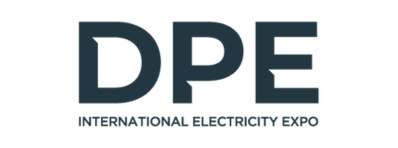DPE Voices
Marco Monsurrò, Chairman of Generazione Distribuita – Motors, Components and Generating Sets federated by ANIMA Confindustria, explains why DPE is an event not to be missed and clarifies the role of distributed generation in building the energy system of tomorrow.

1. What do you think DPE - International Electricity Expo represents and why is it important to attend?
DPE is an important opportunity for players in the electricity sector to come together and talk to each other. As well as allowing the exchange of know-how, thanks to the presence of the most innovative experts and companies in the sector, the show is also an opportunity to take stock of regulatory developments and working groups active at European level in relation to the strategic vision for the energy transition, something that adds value for an association like Generazione Distribuita.
2. What role does the electrical hardware industry play in the energy transition, and what contribution can it make to the creation of the future energy system?
Within the energy transition we are currently going through, electricity has been defined as the standard energy carrier. With this in mind, we can imagine that electricity will be increasingly distributed extensively and a modern and efficient generation, transmission and distribution ecosystem is therefore a prerequisite. Indeed, the transition to sustainable power generation is unthinkable without adequate infrastructure.
3. What do you see as the top three measures to be taken to build a more modern, flexible and secure grid that can meet the growing demand for energy and new market needs?
The first step in envisioning a modern and secure grid would be to define and monitor minimum service standards throughout the country. There are still too many areas in Italy in which electricity supply, in terms of continuity and quality, is below the minimum threshold of industrialised countries, which has a huge negative impact on development possibilities.
Then, once the service level has been evened out across the country, continue the TSO's work towards greater integration between the various energy sources, including specific investments in storage systems and, on the DSO side, in smart grids. All this on the assumption that the physical generation, transmission and distribution infrastructure remains efficient and is continuously upgraded.
Last but not least, I believe we need increased investment in advanced cybersecurity solutions to protect the power grid from cyber threats. The increasing digitisation of advanced transmission and distribution grids means we need to protect critical data and systems from cyberattacks.
What role does distributed generation play in the energy transition? And what makes DPE an unmissable event?
We asked Marco Vecchio, secretary of ANIE Automazione and ANIE Energia.

1. What do you think DPE - International Electricity Expo represents and why is it important to attend?
DPE represents a unique opportunity to experience in an exclusive exhibition space the electronic and electrotechnical technologies that contribute to grid development. Attending therefore means being able to engage with experts in electricity infrastructure and being able to learn about the main technological and regulatory innovations in the electricity system, while also casting an eye on the future of the grid.
2. What role does the electrical hardware industry play in the energy transition, and what contribution can it make to the creation of the future energy system?
Electricity generation, transmission and distribution use advanced components that can enable the energy transition by managing growing demand with an infrastructure that must be increasingly resilient. Renewables cannot develop without grid infrastructure and without bringing intelligence into the grid. As a key concept in this transition, distributed generation cannot therefore be separated from the electrical and electronic equipment industry.
3. What do you see as the top three measures to be taken to build a more modern, flexible and secure grid that can meet the growing demand for energy and new market needs?
a) More geographical planning of new renewable generation facilities. We need to know more about where installations can be situated and also simplify the bureaucracy.
b) More coordination between DSOs and the national TSO in rationalising new installations. The development plans call for substantial growth in RES, but it is unclear how this growth will actually be allocated and what the overlaps are between the various investment paths.
c) Support policies need to be better integrated and rationalised. Today, there are too many channels and navigating the jungle of incentives is a complex task. In addition, support should be provided when it is really needed and in ways that are easy to use.

